One of the popular garden gardening tools is the use of curly plants. They not only look good, but can also support cozy microclimate and comfort on the site. In addition, these plants allow you to build alive hedges. Just before landing them in the country, it is desirable to know some features of planting and care. So, today there are quite a lot of species Lian. All of them can be divided into two groups: annual curly and perennial plants. Each of them has decorative and fruit cultures. Consider each group a little more.
Content
Annual curly plants
To date, there are quite a lot of decorative annual curly plants. They are usually used for vertical landscaping. Despite the fact that each of the species of these crops is very different from each other, there are still some common properties. So, all curly decorative plants have a long stem. At the same time, they give the side branches very rarely. Usually these cultures have very beautiful flowers and greens. With the help of them, you can decorate fences, terraces, balconies and a homeland. Mostly they decorate vertical surfaces.
As for disembarking, annual curly plants are recommended to plant where the soil will be very often drunk. So that such cultures develop well, they should receive enough sunlight. Since they belong to annual, it is obvious that they will have to plant them every year. Seeds easily can get into places on the site, where the lianas are undesirable. In this case, if they managed a proportion, the plant will have to dig together with weeds. Despite the fact that their stem looks weak, in fact he is strong enough. Therefore, they may even displace other cultures growing nearby.
For the normal development of any curly plants, it is necessary that the vertical support is located next to. It can be a grid, an elevation, a pyramid from the branch and others. Only so that she does not interfere with the sprouts firmly entrenched on it, they do not make it too thick. In general, not to damage the root system, the support is best to install directly when landing.
Obviously, annual curly plants do not need to warm up and cut. This is on the one hand convenient to the gardener, but on the other - in the spring for the landing of new crops, it will take more time than on perennial lianas.
Perennial Liana
Wild grapes
One species of perennial lian for the garden is wild grapes. Preferably, it is used for vertical landscaping. His shoots can cling not only for trees and fences, but also for vertical walls. This decorative plant is valued for bright leaves, which appear early and often do not fall down until autumn. At the beginning of the summer, the leaflets have a light green shade, then they gradually darker, and in winter they become red.
Plant wild grapes can be almost any part of your site. Only nearby must be a suitable vertical support, which will allow him to grow well. Otherwise, it will be necessary to independently indicate the plant direction of growth. As a support, you can, for example, use reinforcement, rope or a caniled grid. The most important thing is that grapes can catch it with his escapes. In addition, such a support should be strong enough. Therefore, for this purpose, it is better not to use a simple strained wire.
The rules of wintering wild grapes are as follows: so that the plant is better to postpone the cold, the leaves are usually reset. At the same time, several fruits remain on the vine. In the case of exposure to too low temperatures on the plant branches, after a while, new shoots are growing quite easily.
As for the trimming of wild grapes, there is practically no system for this. It is made in random order. Fruits It is recommended to collect in a timely manner, so that the seeds who have managed to fall in the spring did not give sprouts and did not turn the garden into an impassable area.
Garden grapes
Grape vine of garden culture is characterized by a foliage of a saturated green shade. Perhaps most know how she looks like. After flowering, it appears cluster berries, which gradually ripen and change their color from green and yellow to black and burgundy. When winter comes, foliage with a grape vine subsides. Only the weathered leisure remains, which when spring occurs is again covered by shoots and leaves.
Grapes may well grow without support, but in this case, most likely there will be a bad harvest. Therefore, it is recommended, like a wild culture variety, planting near the wall at home. You can instead to establish a special pergola. The best side for landing is considered West.
Grapes has a tendency to freeze shoots. Moreover, it can happen even in the southern conditions that are considered relatively for him. So that this does not happen, you need to abundantly water it in the second half of summer. In addition, you should delete weakened shoots. For wintering, it is possible to cover the root pieces of a sweetheart or sawdust.
Pruning garden grapes is needed the same as most curly plants. It allows you to form a rich crown and improve fruiting. Mainly fruits bring two-year shoots. Pruning methods set. Their choice depends on climate and culture varieties. If you do not know which one to use, then specify the experienced gardener or seller's seller.
Pleet rose
Another varieties of perennial lian or curly plants. She has beautiful and saturated leaves, than resemble bush roses. This type of culture blooms from the beginning of summer and until late the autumn. Pleet rose It is customary to plant on the sunny side of the house. The branches of this plant usually have a rather large weight. Therefore, it requires a rather durable support. In order for the rose to not extinze in winter, it is best that this support is wooden.
In general, this plant is quite difficult to have winter, because It is sufficiently tender. In some cases, the rose may even not survive wintering. In order not to distort the shoots, it needs to be bought. If the shoots perished, it will not be able to grow in spring. To save old twigs, you should protect the rose from the cold and ice formation. In addition, for successful wintering, you need to warm the roots. For this purpose, you can use wood sawdust. After that, most of the shoots are desirable to bite with a special nonwoven material. As for trimming, this is done in spring. Then all dry branches are cut. Approximately once every three years so that young shoots can grow freely, the rose bush should be cut out.
Honeysuckle
One of the most famous curly plants. When it blooms, a pleasant fragrance appears on which butterflies flies. Blossom usually occurs in the evening. Varieties of this plant are quite a lot. So, there are species that do not bloom at all. Some varieties of culture are even edible. The best for the decor is the honeysuckle of the honeycomb. It is good because unpretentious in relation to the soil, but more prefers drum and sampling soil. At the same time, it is considered a light-affiliated plant. It is very sensitive to climate. So, annual shoots during low temperatures can be frozen.
The honeysuckle is considered a winter-hardy plant, however, shoots, as already mentioned, can be moderated. Breaks are best preserved, which were during wintering under the fallen leaves or under a large layer of snow. Without leaves, the plant is significantly reduced by evaporation, which allows him to survive in the period of drought.
To prepare a honeysuckle to wintering, it needs to be removed from the support. If the old bush is, it is likely to fail, therefore it is usually covered with nonwoven material, consulting it with clothespins. This applies to annual plants. Two-year-old usually do not insulate. However, there is a chance that during the winter some shoots can suffer from icing. Cutting the honeysuckle is desirable to spend late in the fall. She actually implies the thinning of the plant. At the same time, the branches are removed, which lie on the ground, and also cut the old top.
Campxis
Campxis has unusual flowers in the form of a gramophone tube. It blooms almost all summer. There are light green leaves on the stem. Despite the fact that this plant moves well in winter, in the spring it comes to himself for a long time, because of what it is even called sleeping beauty. In June, many garden crops have time to blow there, and Campxis can only wake up and give leaves.
He practically does not need care and, in general, he is not whimsical. But there is a possibility that the plant will die immediately after landing. Therefore, you should not hurry to dig a sapling. If he looks dry and dead, then this is not a reason for trimming. It is worth waiting. The fact is that sometimes he wakes up for a long time. If the conditions are suitable, then Campxis can grow 8-9 meters for two years. In general, it is desirable to plant it in the fenced part of the flower beds. The fact is that after a few years the piglet may break throughout the site. It is recommended to use this option: to wear around the plant some obstacle, for example, a large plastic pot. This will limit the growth of the roots of the wrench.
In addition, Campxis's stems need a reliable vertical support for which it clings to its air roots. After all, they are quite heavy. Otherwise, the structure may collapse to the ground, and then it will have to raise. But pruning this plant is almost not needed. You just do not forget to watch out for, so that the stems do not grow too much. Otherwise, you will be at the site of the real jungle vines. The photo above shows how to look well-groomed plants.
actinidia
It is very beautiful and at the same time, undemanding climbing plants. Leaves usually bloom in mid-spring and fall throughout the summer. In the autumn they fall off and form on the earth crimson-red carpet. Ripe berries are a beautiful orange (orange) color.
By soil Actinidia unpretentious, but the lighting should be sufficient. It is best to plant this plant near the north-eastern wall construction. It is also possible to land in the eastern or western part of or along the fence. If you put on the north side, it is because of this flowering may start late. Consequently, the landing here can prevent earlier budding. It can keep this culture from spring frosts.
As for the winter, the Actinidia carries it well enough. Most importantly, in the summer it was provided sufficient watering and other necessary care. Strong plants are usually easily tolerate the winter.
What should be approached with the responsibility, so it is to cut. This should be done only in strictly defined periods. Thus, this procedure should be carried out in the time of flowering, immediately after, and after leaf fall. In the early years of the landing of plants, pruning is necessary in order to crown formed. This usually leaves only 2-3 most powerful escape. When the crown is formed, pruning should be done in order to remove withered and weakened branches of culture.
Clematis
This plant can bloom up to two times per year. But the twice-flowering achieve cutting wither flowers that have enough beautiful clematis. Its outer petals surround the inner little flower. They come in different shades. It is therefore possible to choose flowers for your taste. Inner flowers are usually white or light shade. At the same time the tips of his moving in color, which are the main leaves.
Generally, clematis does not require any special care. Because unpretentious. The main thing is that his roots were always closed. Planted this culture is usually on the sunny side of the garden. The roots can be closed by using ground cover plants. If you decide to plant in their area of \u200b\u200bclematis, it is necessary to create for him a support, for example, to pull the cloth or mesh kanilirovannaja. Its fixed on a solid foundation. As the clues, this plant uses its leaves. It is through them is "creeping" up the fixed grid.
Clematis refers to many years of curving plants. Before wintering, he drops his foliage, only dry sprigs remain. When spring comes, this culture wakes up and again gradually blooms. As for trimming, it is best to maintain the branches at the height of the eyes. For each of the many varieties of Clematis, there is a pruning approach. This procedure is usually carried out in the spring, while under the scissors are falling both dry branches and healthy by external kidney.
Ivy
The look of ivy, perhaps, is familiar to everyone. It is mainly memorized by its large leaves, which almost completely close the entire surface. As for flowering, the colors of this plant can be said, it does not happen. At least in our climate. Ivy leaves have different shades. Mostly it shades of green.
In our climatic zone, he needs special care. Otherwise, in the summer, he can simply dry, and in winter to die due to the effects of low temperatures. Nevertheless, this plant is still popular. Ivy is usually used as an ornament for vertical surfaces. It is also often used as a lawn coating when it is steel on the ground.
These plants in any case are recommended to plant only in the illuminated place. At the same time, there should be no drafts on the selected area. If Ivy is sisted as a decor for the wall, then in the first years you need to create a reliable support for it. This may be, for example, stretched ropes and doom. Moreover, in the first few years, you will have to curl ivy on the support on their own. Gradually, the stalks themselves will already be cling to it. In winter, the plant does not drop the leaves, and the winter with them. At this time, he does not need some special care. In the spring period, Ivy completely updated and reset the old leaves.
Glicia
This plant has a very attractive appearance. It is decorated with a rice bright green leaflets and clusters of gently white (blue, purple or pink) flowers. Plant planted on well-lit garden sections. In addition, for this culture, a massive and stable support should be equipped. Print spend 2 times a year - in the fall and summer.
Perennial Lian: Video
About the design of the garden with the help of perennial Lian can be viewed on the video:


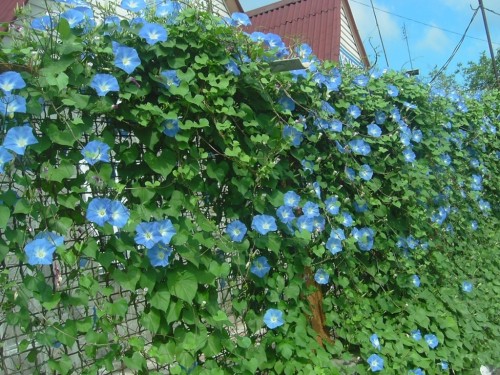

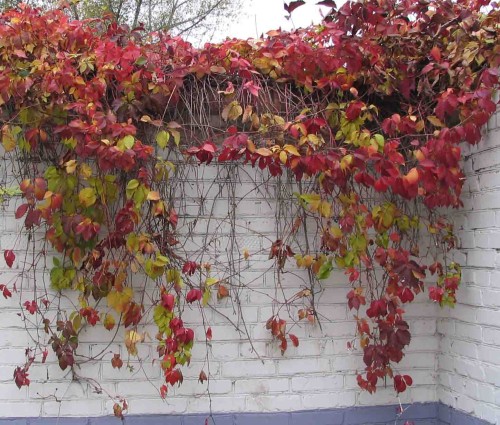
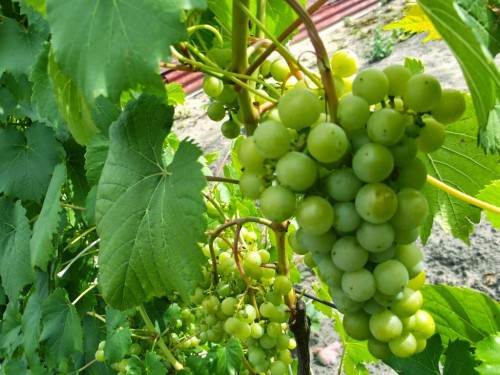
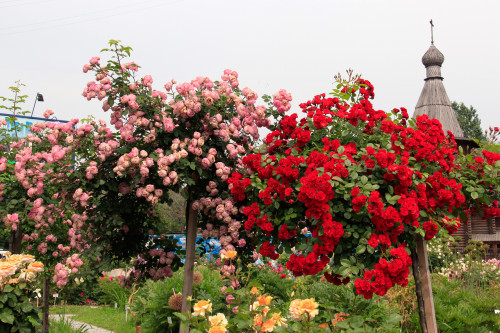
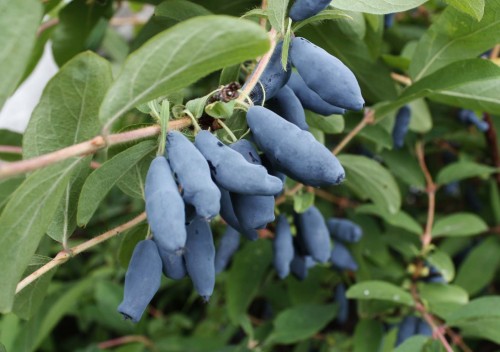
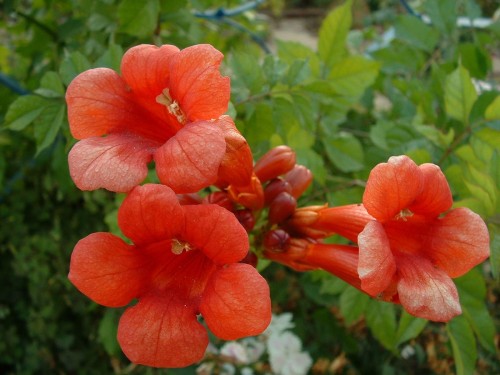

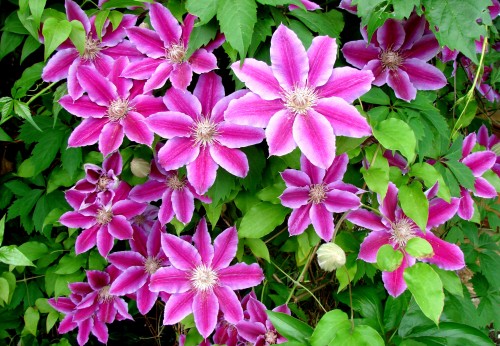
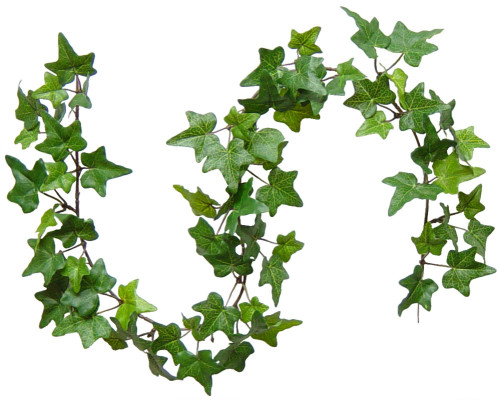
![12]](http://gid-str.ru/images/gidstr/2015/03/122-500x333.jpg)

















